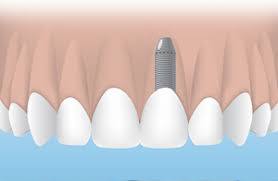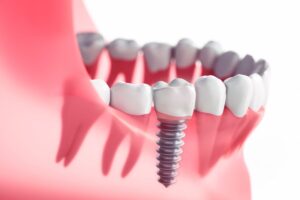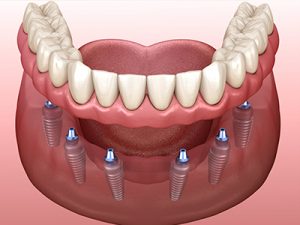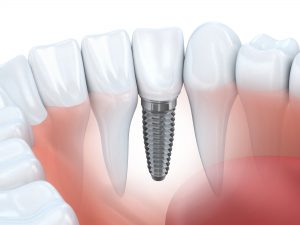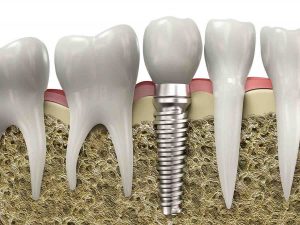
The journey to restore a beautiful smile can be complex, but understanding the tooth extraction and implant process can make it less daunting. With the advancements in dental implant technology, replacing missing teeth has become more streamlined and accessible. However, it’s essential to grasp the various stages of the dental implant timeline and the factors that may affect its duration.
This comprehensive guide will delve into the tooth extraction and implant timeline, discussing the pre-implant, implant surgery, and post-implant procedures, as well as the importance of follow-up appointments and maintenance. By understanding the process and its intricacies, you’ll be better equipped to make informed decisions about your dental health and the best course of action for restoring your smile.
Key Takeaways
- Understanding the timeline of a tooth extraction and implant process is essential, as it can range from 3 to 9 months.
- Factors such as pre-implant procedures, bone quality, and number of implants affect the duration.
- Follow up appointments and maintenance are necessary for successful dental implants in the long term.
Understanding the Tooth Extraction and Implant Timeline
Various factors such as bone quality, number of implants, and additional procedures required can cause the dental implant timeline to range from 3 to 9 months. Being aware of these factors is beneficial, as they can influence the overall duration of the dental implant process. Although the general dental implant process timeline for dental implants is between 3 and 9 months, efficient solutions can help minimize patient chair time and reduce wait times between appointments, regardless of the number of implants.
Understanding the specific procedures and their impact on the overall process is key to fully grasping the dental implant timeline. This includes:
- Pre-implant procedures like tooth extractions and bone grafting
- The dental implant surgery itself
- Post-implant procedures such as abutment installation and crown placement
Factors Affecting Timeline
Several factors can influence the timeline of the dental implant process, including:
- Bone quality
- The need for bone grafts
- The type of implant procedure
- The number of implants
The patient’s overall dental health also plays a significant role, as it can affect the healing process and the time required for recovery.
During the initial consultation, the dentist will assess the patient’s overall dental health and determine if bone grafting is necessary, which can extend the timeline of the dental implant process. Additionally, the type of implant procedure can impact the tooth implant process, as certain procedures may require more time than others.
General Timeline Overview
The timeline for the dental implant process, particularly when bone loss is involved, generally consists of three phases: pre-implant procedures, the implant surgery itself, and post-implant care, each separated by healing periods. If you’re exploring dental implants Rockville MD, it’s important to note that the timeline can vary based on individual circumstances. On average, the full process for replacing a missing tooth takes around 6 to 9 months.
Although this general timeline can provide a rough estimate, remember that each patient’s situation is unique. Individual factors will, in the end, determine the exact duration of their dental implant process. By understanding the various stages and the factors that can influence the timeline, you’ll be better prepared for the journey towards restoring your smile.
Pre-Implant Procedures and Their Impact on the Timeline
The timeline of the dental implant process can be significantly impacted by pre-implant procedures, which are integral to the overall process. These procedures, such as tooth extractions and bone grafting, ensure that your jawbone is prepared and healthy enough to support the dental implant.
Tooth extractions may require additional healing time before implant placement, depending on the complexity of the extraction. Meanwhile, bone grafting may be necessary to increase jaw bone density, which could add several months to the timeline. We should examine in greater detail each of these pre-implant procedures and their impact on the dental implant timeline.
Tooth Extractions
Tooth extractions involve the removal of a damaged or decayed tooth from its socket in the jawbone. Following the extraction, a blood clot typically forms in the socket to promote healing. For proper healing, it’s vital to adhere to the post-extraction care instructions provided by the dentist.
The impact of tooth extractions on the dental implant timeline depends on the complexity of the extraction. In some cases, additional healing time may be necessary before implant placement can occur. When planning for your dental implant journey, considering this factor is critical.
Bone Grafting
Bone grafting is a surgical procedure that replaces missing bone with material from the patient’s own body or a synthetic substitute. This procedure, known as a bone graft, is often used in dental implant treatments to increase the volume and density of the jawbone, particularly in anticipation of dental implants.
Depending on the patient’s specific needs, bone grafting can extend the dental implant timeline by 4-12 months while the graft heals and integrates with the jawbone. This additional time may seem lengthy, but it is necessary to ensure the success of the dental implant by providing sufficient support for the implant post.
The Dental Implant Surgery Process
The dental implant surgery process, also known as the dental implant procedure, is a pivotal stage in the tooth restoration journey, consisting of implant placement and osseointegration, with healing periods between each step. Dental implant treatment typically lasts for 20 minutes to 1 hour per implant. Dental implants may be difficult to place in some cases. Multiple visits over a period of weeks or months could be required for placing multiple implants.
Grasping the dental implant surgery process and its stages can help to alleviate any anxiety or uncertainty you might feel about the procedure. Let’s explore the implant placement and osseointegration stages in greater detail.
Implant Placement
Implant placement is a surgical procedure wherein a titanium screw is inserted into the jawbone. This screw serves as the foundation for the artificial tooth, or dental crown, that will eventually be attached to it. The procedure typically takes between 30 to 60 minutes for a single implant and 1 to 3 hours for multiple implants.
In some cases, immediate implant placement may be possible, where the implant is inserted into the extraction socket during the tooth extraction especially during the full mouth dental implants procedure. This can help reduce the overall timeline of the dental implant process, although it may not be suitable for every patient.
Osseointegration
Osseointegration is the process whereby the implant fuses with the jawbone, creating a strong and stable foundation for the artificial tooth. This process typically takes 2-5 months, depending on the patient’s bone quality and overall health.
Remember that smoking during osseointegration may result in unsuccessful outcomes. By following your dentist’s recommendations and taking care of your oral health, you can ensure the best possible outcome for your dental implant surgery.
Post-Implant Procedures and Timeline
Following the dental implant surgery, there are several post-implant procedures that need to be completed before the restoration process is considered complete. These procedures include abutment installation and crown placement, each with their own healing periods.
Grasping these post-implant procedures and their impact on the overall dental implant timeline can assist you in planning and anticipating the final steps in your journey towards a restored smile.
Abutment Installation
Abutment installation involves the following steps:
- Attaching a connector to the implant, which will serve as the link between the implant and the dental crown.
- The dentist will open the gum tissue over the implant screw.
- Affix the abutment.
- Restore the tissue surrounding the abutment.
After the abutment is installed, a recovery period of 2 weeks to 6 weeks is required before the permanent crown can be fabricated. During this time, the dentist may also take impressions of the patient’s teeth to create a custom crown that will be placed on top of the abutment.
Crown Placement
Crown placement is the final step in the dental implant process, involving the attachment of a custom-made artificial tooth to the abutment. This procedure ensures that the dental implant not only functions like a natural tooth but also looks like one, blending seamlessly with the surrounding teeth.
Once the crown is placed, your dental implant journey is complete. Maintaining good dental health and attending regular follow-up appointments are key to ensuring the long-term success of your dental implant.
Importance of Follow-Up Appointments and Maintenance
Follow-up appointments and maintenance are necessary to ensure the longevity and success of your dental implant. These appointments typically involve a visual examination of the implant site, as well as x-rays to assess the implant’s position and stability. Additionally, maintaining good dental health through proper oral hygiene and regular dental cleanings is crucial for the long-term success of dental implants.
By adhering to your dentist’s recommendations and taking care of your oral health, you can enjoy your new smile for many years to come.
Monitoring Implant Success
Regular dental check-ups play a vital role in monitoring the success of your dental implant and addressing any potential issues early on. Assessing various factors, such as implant stability, lack of infection, and proper osseointegration, helps ensure that the implant is functioning optimally and has integrated successfully with the surrounding tissues.
For the long-term success of your dental implant, it’s necessary to preserve healthy peri-implant tissues and undergo regular dental examinations. By taking these proactive steps, you can maintain your restored smile and overall dental health.
Maintenance and Dental Health
For the durability of your dental implant, it’s important to maintain good dental health. This includes brushing twice daily, flossing daily, and utilizing mouthwash to keep your mouth clean and healthy. Additionally, regular dental cleanings are paramount for eliminating plaque and tartar buildup, which can lead to gum disease and tooth decay.
By following a consistent oral hygiene routine and scheduling regular dental cleanings, you can help ensure that your dental implant remains functional and healthy for years to come.
Summary
In conclusion, the tooth extraction and dental implant timeline is a complex yet manageable process that varies depending on factors such as bone quality, the need for bone grafting, and the type of implant procedure. By understanding the various stages of the dental implant timeline, including pre-implant procedures, implant surgery, and post-implant procedures, you’ll be better equipped to make informed decisions about your dental health.
Regular follow-up appointments and proper maintenance are crucial for the long-term success of dental implants. By taking charge of your dental health and working closely with a dental professional, you can restore your smile and enjoy the benefits of a functional and aesthetically pleasing dental implant.
Frequently Asked Questions
How long to wait to place dental implants after tooth extraction?
Typically, dental implants must be placed at least 10 weeks after a tooth extraction in order to ensure that the mouth is completely healed and free of infection. Early implant placement may be possible if your gums are healed and you do not have an oral infection.
Can I get an implant 2 years after extraction?
You may still be a good candidate for dental implants even if you have had teeth extracted 2 years ago. It primarily comes down to a question of bone density.
How long does a dental implant take from start to finish?
Getting a dental implant from start to finish can take anywhere from 3 months to one year, depending on the individual case. During this time period, the implant post will be placed, healing will occur, and a crown will be fitted.
What are the 3 stages of dental implants?
Dental implants typically involve three stages: placing the implant into the jawbone, adding an abutment to secure the artificial tooth, and then attaching the prosthetic tooth or crown.
How long does the osseointegration process take?
The osseointegration process typically takes between 3-7 months, depending on the patient’s individual characteristics.


